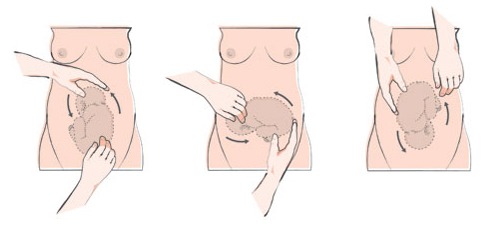External cephalic version
The version by external maneuvers (VME) is to turn a baby who comes by the seat (buttocks down) to bring him upside down
Dr. Luka Velemir
Dr. Velemir can produce an external version in his office in Nice.
The Santa Maria Maternity Hospital in Nice
Extraperitoneal caesarean section
Dr. Velemir is one of the ten gynecologists-obstetricians to practice extraperitoneal caesarean section in France. The technique of extraperitoneal cesarean section is still unknown, almost confidential, it has great benefits for moms and their babies. With extraperitoneal caesarean section, the sequelae and the risk of complications are reduced.
Learn more about extraperitoneal caesarean section..
What is an external cephalic version?
The external cephalic version (VME) consists in turning a baby that is in the breech position (buttocks down) to bring his head down, in the usual position for a normal birth. During this manoeuvre, the hands of the obstetrician help the child to turn over, slowly and progressively manipulating his buttocks and head through the mother’s womb.
What is the interest of a version?
At the time of birth, nearly 5% of children are in breech position. When conditions are not strictly ideal, a breech birth carries a higher risk of complications for the unborn child in case of cephalic presentation (head down). Under these conditions, a planned caesarean section is often necessary. The version is used by many teams in the world, including Dr. Velemir’s, to avoid complications related to breech delivery and / or caesarean section. Version is done between 36 and 37 weeks of amenorrhea. His success rate is 60 to 70% depending on the case.
Alternative techniques such as acupuncture or postural methods (Indian bridge position) may precede the VME attempt, without replacing it in case of failure.
What happens during the version?
The version is a common and well-established and simple procedure. The mother lies down on her back. She is first given a drug to relax her uterus in order to make handling easier. The obstetrician places his hands on her stomach and begins to move the baby very slowly, first lifting the buttocks then, directing the head down to the desired position. The baby’s heart rate is constantly monitored by ultrasound. The version only takes a few minutes and usually causes nothing more than discomfort or pain.
Are there risks?
Very rarely, some incidents may occur during or as the version takes place: water loss, bleeding from the vagina, uterine contractions. These situations can sometimes require the patient to remain hospitalized under observation. Exceptionally, abnormal foetal heart rate may need a quick baby extraction by caesarean section. That is why the version is performed in optimal conditions of safety in the delivery room.








